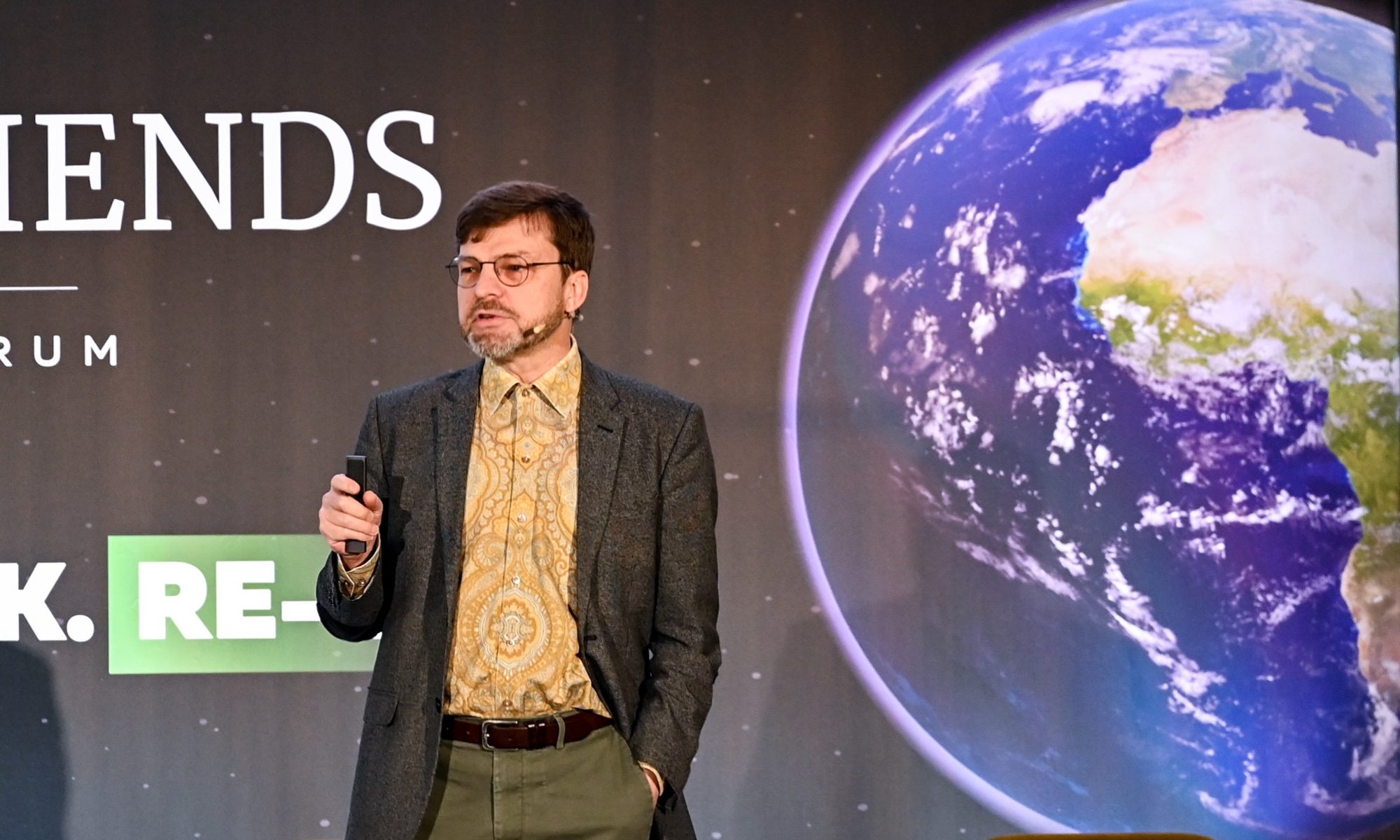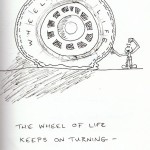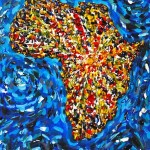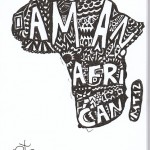Click on the thumbnail images to view the pictures in the gallery
Open Sourcing Sustainability
Open Sourcing Sustainability:
Web 2.0 Meets CSR 2.0
Blog by Wayne Visser
Part 9 of 13 in the Age of Responsibility Blog Series for 3BL Media.
CSR 2.0 responsiveness goes beyond traditional partnerships and CSO effectiveness; it is also about innovative ways to collaborate. I want to flag several Web 2.0 inspired experiments in responsiveness that are opening up sustainability and responsibility solutions to the public. One is a platform called the Eco-Patent Commons, which allows companies to share their intellectual property for the common good. The Commons was launched by WBCSD and covers issues like waste, pollution, global warming and energy. ‘The premise of the Commons,’ says Björn Stigson, president of the WBCSD, ‘is that the free sharing of these patents leads to new collaborations and innovation aimed at helping others become more eco-efficient and/or operate in a more sustainable way.’
The Eco-Patent Commons’ publicly searchable database already contains over one hundred eco-friendly patents from companies like Bosch, Dow, DuPont, Fuji Xerox, Hitachi, HP, IBM, Nokia, Pitney Bowes, Ricoh, Sony and Taisei. Xerox, for example, has eleven pledged patents that cover a process that cuts the time it takes to remove toxic waste from soil and water from years to months, as well as a patent that covers technology that makes magnetic refrigeration less harmful to the environment.
Dr. John E. Kelly III, IBM Senior Vice President and Director of IBM Research, believes that ‘innovation to address environmental issues will require both the application of technology as well as new models for sharing intellectual property among companies in different industries … In addition to enabling new players to engage in protecting the environment, the free exchange of valuable intellectual property will accelerate work on the next level of environmental challenges.’
Similarly, Donal O’Connell, Director of Intellectual Property for Nokia, thinks that ‘environmental issues have great potential to help us discover the next wave of innovation because they force us all to think differently about how we make, consume and recycle products.’ Nokia have pledged a patent designed to help companies safely re-use old mobile phones by transforming them into new products like digital cameras, data monitoring devices or other electronic items. ‘Recycling the computing power of mobile phones in this way could significantly increase the reuse of materials in the electronics industry’, concludes O’Connell.
Even more significant than the individual patents that have been added is the shift in thinking that this signals among some of the largest companies in the world. It is true none of them are exactly ‘giving away the family silver’ – they are not opening all their patents – but they are demonstrating responsiveness on a scale never seen before. They are recognising that the global problems we face are larger than whatever individual solutions can accomplish. If we are truly going to be effective in tackling our most intractable challenges, we will need the wisdom of crowds and the collective efforts of millions of entrepreneurs …
Continue reading
[button size=”small” color=”blue” style=”download” new_window=”false” link=”http://www.waynevisser.com/wp-content/uploads/2012/04/blog_open_sourcing_wvisser.pdf”]Pdf[/button] Open Sourcing Sustainability (blog)
Related websites
[button size=”small” color=”blue” style=”tick” new_window=”false” link=”http://www.csrinternational.org”]Link[/button] CSR International (website)
[button size=”small” color=”blue” style=”tick” new_window=”false” link=”http://www.waynevisser.com/books/the-age-of-responsibility”]Link[/button] The Age of Responsibility (book)
Cite this blog
Visser, W. (2012) Open Sourcing Sustainability: Web 2.0 Meets CSR 2.0, Wayne Visser Blog Briefing, 3 April 2012.
Share this page
Future Trends in CSR
Future Trends in CSR:
The Next 10 Years
Article by Wayne Visser
Looking to the future, what is needed – and what is just starting to emerge – is a new approach to CSR, which I call Systemic CSR, or CSR 2.0. This is a purpose-driven, principle-based approach, in which business seeks to identify and tackle the root causes of our present unsustainability and irresponsibility, typically through innovating business models, revolutionizing their processes, products and services and lobbying for progressive national and international policies. I have identified 10 trends:
Trend 1 – In the future, we will see most large, international companies having moved through the first four types or stages of CSR (defensive, charitable, promotional and strategic) and practicing, to varying degrees, transformative CSR, or CSR 2.0.
Trend 2 – In the future, reliance on CSR codes, standards and guidelines like the UN Global Compact, ISO 14001, SA 8000, etc., will be seen as a necessary but insufficient way to practice CSR. Instead, companies will be judged on how innovative they are in using their products and processes to tackle social and environmental problems.
Trend 3 – In the future, self-selecting ‘ethical consumers’ will become less relevant as a force for change. Companies – strongly encouraged by government policies and incentives – will scale up their choice-editing, i.e. ceasing to offer ‘less ethical’ product ranges, thus allowing guilt-free shopping.
Trend 4 – In the future, cross-sector partnerships will be at the heart of all CSR approaches. These will increasingly be defined by business bringing its core competencies and skills (rather than just its financial resources) to the party, as Wal-Mart did with its logistics capability in helping to distribute aid during Hurricane Katrina.
Trend 5 – In the future, companies practicing CSR 2.0 will be expected to comply with global best practice principles, such as those in the UN Global Compact or the Ruggie Human Rights Framework, but simultaneously demonstrate sensitivity to local issues and priorities. An example is mining and metals giant BHP Billiton, which have strong climate change policies globally, as well as malaria prevention programmes in Southern Africa.
Trend 6 – In the future, progressive companies will be required to demonstrate full life cycle management of their products, from cradle-to-cradle. We will see most large companies committing to the goal of zero-waste, carbon-neutral and water-neutral production, with mandated take-back schemes for most products.
Trend 7 – In the future, much like the Generally Accepted Accounting Practices (GAAP), some form of Generally Accepted Sustainability Practices (GASP) will be agreed, including consensus principles, methods, approaches and rules for measuring and disclosing CSR. Furthermore, a set of credible CSR rating agencies will have emerged.
Trend 8 – In the future, many of today’s CSR practices will be mandatory requirements. However, CSR will remain a voluntary practice – an innovation and differentiation frontier – for those companies that are either willing and able, or pushed and prodded through non-governmental means, to go ahead of the legislation to improve quality of life around the world.
Trend 9 – In the future, corporate transparency will take form of publicly available sets of mandatory disclosed social, environmental and governance data – available down to a product life cycle impact level – as well as Web 2.0 collaborative CSR feedback platforms, WikiLeaks type whistleblowing sites and product rating applications (like the GoodGuide iPhone app).
Trend 10 – In the future, CSR will have diversified back into its specialist disciplines and functions, leaving little or no CSR departments behind, yet having more specialists in particular areas (climate, biodiversity, human rights, community involvement, etc.), and more employees with knowledge of how to integrate CSR issues into their functional areas (HR, marketing, finance, etc.)
Collectively, these trends reflect a scenario …
Continue reading
[button size=”small” color=”blue” style=”download” new_window=”false” link=”http://www.waynevisser.com/wp-content/uploads/2012/12/inspiration_csr_trends_wvisser.pdf”]Pdf[/button] Future Trends in CSR (article)
Related pages
[button size=”small” color=”blue” style=”info” new_window=”false” link=”http://www.waynevisser.com/books/the-age-of-responsibility”]Page[/button] The Age of Responsibility (book)
[button size=”small” color=”blue” style=”tick” new_window=”false” link=”http://www.csrinternational.org”]Link[/button] CSR International (website)
Cite this article
Visser, W. (2012) Future Trends in CSR: The Next 10 Years, CSR International Inspiration Series, No. 11.
Share this page
The Long Tail of CSR
The Long Tail of CSR:
When Smaller is Bigger
Blog by Wayne Visser
Part 8 of 13 in the Age of Responsibility Blog Series for 3BL Media.
Is bigger always better or can we still say ‘small is beautiful’, as the pioneering economist E.F. Schumacher argued way back in 1973? Certainly, the ‘muesli-eating, sandal-wearing’ New Age approach to small-is-beautiful has been rather more of an advert for ‘small is groovy, but ultimately ineffectual’. But what if we could do both big and small at the same time?
I discussed the issue of scalability with Simon Zadek, a widely respected thought leader on the civil corporation and accountability, who posed the rhetorical question: ‘Is scale large institutional functionality, or is it a flotilla of little boats?’ This is where Chris Anderson’s Web 2.0 concept of ‘the long tail’ is very useful. The Long Tail – named after the extended tail of a statistical distribution curve – is the idea that selling less to more people is big business. It’s the business model that has spawned the most successful companies of the Web 2.0 age. The Long Tail questions the conventional wisdom that says success is about generating ‘blockbusters’ and ‘superstars’ – those rare few products and services that become runaway bestsellers.
Anderson sums up his message by saying that: 1) the tail of available variety is longer than we think; 2) it’s now within reach economically; and 3) all those niches, when aggregated, can make up a significant market. He also notes that this Long Tail revolution has been made possible by the digital age, which has dramatically reduced the costs of customised production and niche distribution. There are three enablers of successful long tail businesses, according to Anderson: 1) democratising the tools of production (e.g. digi-cams, content editing software, blogging tools); 2) democratising the tools of distribution (e.g. Amazon, eBay, iTunes, Netflix); and 3) connecting supply and demand (e.g. Google, blogs, Rotten Tomatoes).
So I got to wondering: Is there a Long Tail of CSR? And if so, what does it look like? To me, the Long Tail of CSR is all about extending the reach of CSR, and improving its ability to satisfy specific social and environmental needs. Let’s use Anderson’s enablers as a framework for thinking about this.
Democratising the tools of CSR production
This is about breaking CSR silos and extending CSR beyond multinationals. At the early stages of CSR adoption, it is often confined to Public Relations, Corporate Affairs or Marketing departments. As CSR implementation matures, responsibility tends to migrate to specialised CSR departments of various descriptions (environment, health & safety, accountability, corporate citizenship, etc.). However, these versions of CSR are like the Hollywood model of blockbuster films. They suggest that CSR is about a few, high visibility programmes that are designed by CSR experts and delivered by big companies.
By contrast, democratising CSR production would mean firstly embedding CSR across the organisation – making it the responsibility of operations managers, financial managers, shop floor workers, basically everyone. This is only possible if CSR becomes part of the culture and incentive systems of an organisation. CSR would also need to be extended beyond the usual suspects (i.e. the high profile, branded multinationals) to the less visible B2B (business to business) and national (rather than multinational) organisations, as well as to SMEs (small and medium sized enterprises) and down the supply chain …
Continue reading
[button size=”small” color=”blue” style=”download” new_window=”false” link=”http://www.waynevisser.com/wp-content/uploads/2012/04/blog_long_tail_wvisser.pdf”]Pdf[/button] The Long Tail of CSR (blog)
Related websites
[button size=”small” color=”blue” style=”tick” new_window=”false” link=”http://www.csrinternational.org”]Link[/button] CSR International (website)
[button size=”small” color=”blue” style=”tick” new_window=”false” link=”http://www.waynevisser.com/books/the-age-of-responsibility”]Link[/button] The Age of Responsibility (book)
Cite this blog
Visser, W. (2012) The Long Tail of CSR: When Smaller is Bigger, Wayne Visser Blog Briefing, 27 March 2012.
Share this page
Nature vs. Nurture
Nature vs. Nurture:
Are Social Entrepreneurs Born or Made?
Blog by Wayne Visser
Part 7 of 13 in the Age of Responsibility Blog Series for 3BL Media.
What do Taddy Blecher, Anurag Gupta, Wang Chuan-Fu and all of the other social entrepreneurs have in common? Is this a special breed of human being? Are social entrepreneurs born or can they be made? In the academic literature, there is an interesting thread of research that is around the concept of ‘champions’ in organisations, especially ‘environmental champions’. The idea draws on prior conceptions of the human resources champion in the 1970s and 1980s, before HR became institutionalised.
Academics define environmental champions as people who can attractively express a personal vision about environmental protection that is in tune with both industry’s needs and wider public concern and who convince and enable organisation members to turn environmental issues into successful corporate programs and innovations. Environmental champions have been showed to imbue a combination of characteristics, including being a catalyst, champion, sponsor, facilitator and demonstrator. Their skills include the ability to identify, package and sell environmental issues within their organisations. Their effectiveness in engaging others rests heavily on expertise, top management support and a strong appreciation for the problems that every business unit or operations manager faces.
Research on champions is not confined purely to the environmental dimension of sustainability. Others have written about socially responsible change-agents, as well as managers’ individual discretion as a component of corporate social performance. British academic Christine Hemingway, for example, finds that CSR can be the result of championing by a few managers, based on their personal values and beliefs, despite the personal and professional risks this may entail. Individual managers are also often mediators in corporate philanthropy and stakeholder influence. Hence, the notion of CSR champions has emerged as an important concept, which I will return to this in the final blog on individual change agents.
Bill Drayton, who has been involved in selecting and tracking the progress of the 2,700 Ashoka Fellows, believes social entrepreneurs ‘focus everyday on the “how to” questions. How are they going to get from here to their ultimate goal? How are they going to deal with this opportunity or that barrier? How are the pieces going to fit together? They are engineers, not poets. … The entrepreneur’s job is not to take an idea and then implement it. That is what franchisees do. The entrepreneur is building something that is entirely new – by constantly creating and testing and recreating and then testing and recreating again’ …
Continue reading
[button size=”small” color=”blue” style=”download” new_window=”false” link=”http://www.waynevisser.com/wp-content/uploads/2012/04/blog_nature_nurture_wvisser.pdf”]Pdf[/button] Nature vs Nurture (blog)
Related websites
[button size=”small” color=”blue” style=”tick” new_window=”false” link=”http://www.csrinternational.org”]Link[/button] CSR International (website)
[button size=”small” color=”blue” style=”tick” new_window=”false” link=”http://www.waynevisser.com/books/the-age-of-responsibility”]Link[/button] The Age of Responsibility (book)
Cite this blog
Visser, W. (2012) Nature vs. Nurture: Are Social Entrepreneurs Born or Made, Wayne Visser Blog Briefing, 20 March 2012.
Share this page
CSR 2.0: The New DNA
CSR 2.0 as the New DNA of Business
Blog by Wayne Visser
Part 6 of 13 in the Age of Responsibility Blog Series for 3BL Media.
By May 2008, it was clear to me that the evolutionary concept of Web 2.0 held many lessons for CSR, and I began to develop my thinking around CSR 2.0. It quickly became clear, however, that a metaphor can only take you so far. What was needed was a set of principles against which we could test CSR. These went through a few iterations, but I eventually settled on five, which form a kind of mnemonic for CSR 2.0: Creativity (C), Scalability (S), Responsiveness (R), Glocality (2) and Circularity (0). These principles, which will be explored in detail in the next chapters, can be described briefly as follows:
Creativity – The problem with the current obsession with CSR codes and standards (including the new ISO 26000 standard) is that it encourages a tick-box approach to CSR. But our social and environmental problems are complex and intractable. They need creative solutions, like Free-play’s wind-up technology or Vodafone’s M-Pesa money transfer scheme.
Scalability – The CSR literature is liberally sprinkled with charming case studies of truly responsible and sustainable projects. The problem is that so few of them ever go to scale. We need more examples like Wal-Mart ‘choice editing’ by converting to organic cotton, Tata creating the affordable eco-efficient Nano car or Muhammad Yunus’s Grameen microfinance model.
Responsiveness – More cross-sector partnerships and stakeholder-driven approaches are needed at every level, as well as more uncomfortable, transformative responsiveness, which questions whether particular industries, or the business model itself, are part of the solution or part of the problem. A good example of responsiveness is the Corporate Leaders Group on Climate Change.
Glocality – This means ‘think global, act local’. In a complex, interconnected, globalising world, companies (and their critics) will have to become far more sophisticated in combining international norms with local contexts, finding local solutions that are culturally appropriate, without forsaking universal principles. We are moving from an ‘either-or’ one-size-fits-all world to a ‘both-and’ strength-in-diversity world.
Circularity – Our global economic and commercial system is based on a fundamentally flawed design, which acts as if there are no limits on resource consumption or waste disposal. Instead, we need a cradle-to-cradle approach, closing the loop on production and designing products and processes to be inherently ‘good’, rather than ‘less bad’, as Shaw Carpets does.
I believe that CSR 2.0 – or Systemic CSR (I also sometimes call it Radical CSR or Holistic CSR, so use whichever you prefer) – represents a new model of CSR. In one sense, it is not so different from other models we have seen before. We can recognise echoes of Archie Carroll’s CSR Pyramid, Ed Freeman’s Stakeholder Theory, Donna Wood’s Corporate Social Performance, John Elkington’s Triple Bottom Line, Stuart Hart and C.K. Prahalad’s Bottom of the Pyramid, Michael Porter’s Strategic CSR and the ESG approach of Socially Responsible Investment, to mention but a few. But that is really the point – it integrates what we have learned to date. It presents a holistic model of CSR.
The essence of the CSR 2.0 DNA model are …
Continue reading
[button size=”small” color=”blue” style=”download” new_window=”false” link=”http://www.waynevisser.com/wp-content/uploads/2012/04/blog_csr2_new_dna_wvisser.pdf”]Pdf[/button] CSR 2.0: New DNA (blog)
Related websites
[button size=”small” color=”blue” style=”tick” new_window=”false” link=”http://www.csrinternational.org”]Link[/button] CSR International (website)
[button size=”small” color=”blue” style=”tick” new_window=”false” link=”http://www.waynevisser.com/books/the-age-of-responsibility”]Link[/button] The Age of Responsibility (book)
Cite this blog
Visser, W. (2012) CSR 2.0 as the New DNA of Business, Wayne Visser Blog Briefing, 13 March 2012.
Share this page
Cracking the CSR Codes Puzzle
Cracking the CSR Codes Puzzle
Blog by Wayne Visser
Part 5 of 13 in the Age of Responsibility Blog Series for 3BL Media.
Looking back, we can see that the 1990s were the decade of CSR codes – not only EMAS, ISO 14001 and SA 8000, but also the Forest Steward Council (FSC) and Marine Stewardship Council (MSC) Certification Schemes, Green Globe Standard (tourism sector), Corruption Perceptions Index, Fairtrade Standard, Ethical Trading Initiative, Dow Jones Sustainability Index and OHSAS 18001 (health & safety), to mention just a few. But all that was just a warm up act when we look at the last 10 years, when we have seen codes proliferate in virtually every area of sustainability and responsibility and all major industry sectors. So much so that in the A to Z of Corporate Social Responsibility, we included over 100 such codes, guidelines and standards – and that was just a selection of what it out there. To illustrate the point, here is a sample of what has been thrust onto corporate agendas since the year 2000:
The Carbon Disclosure Project; Global Alliance for Vaccines and Immunisation; GRI Sustainability Reporting Guidelines; Kimberley Process (to stop trade in conflict diamonds); Mining and Minerals for Sustainable Development (MMSD) Project; UN Global Compact; UN Millennium Development Goals; Voluntary Principles on Human Rights; FTSE4Good Index; Global Business Coalition on HIV/AIDS; Global Fund to Fight AIDS, Tuberculosis and Malaria; Business Principles for Countering Bribery; Publish What Pay Campaign; Johannesburg Declaration on Sustainable Development; London Principles (finance sector); AA 1000 Assurance Standard; Equator Principles (finance sector); Extractive Industries Transparency Initiative (EITI); Roundtable on Sustainable Palm Oil; Global Corruption Barometer; UN Convention Against Corruption; UNEP Finance Initiative; UN Norms on Business and Human Rights; World Bank Extractive Industries Review; AA 1000 Standard for Stakeholder Engagement; EU Greenhouse Gas Emissions Trading Scheme; Millennium Ecosystem Assessment; ISO 14064 Standard on Greenhouse Gas Accounting and Verification; Stern Review on the Economics of Climate Change; Bribe Payers’ Index; UN Principles for Responsible Investment; ClimateWise Principles (insurance sector); UNEP Declaration on Climate Change; UN Principles for Responsible Management Education (PRME); Bali, Poznan and Copenhagen Communiqués (climate change) … and many, many more.
No wonder companies are suffering from code fatigue and audit exhaustion. It is the supreme paradox of the Age of Management – companies are pressured to standardise their efforts on sustainability and responsibility, while stakeholders and critics (myself included) remain unconvinced that this approach identifies or addresses the root causes of the problems we face. Many of the institutional failures over the past 20 years have, I would argue, been systemic failures of culture, rather than bureaucratic failures of management; they have more to do with a prevailing set of values than a particular set of procedures.
The latest in this code-mania is ISO 26000 on Social Responsibility. I have suggested before that ISO 26000 is like a teddy bear – something cute and fluffy, which may help companies sleep better at night, but nothing like the grizzly bear that we really need to shake business out of their CSR complacency. Of course, it is unfair of me to make so …
Continue reading
[button size=”small” color=”blue” style=”download” new_window=”false” link=”http://www.waynevisser.com/wp-content/uploads/2012/04/blog_codes_wvisser.pdf”]Pdf[/button] Cracking the CSR Codes Puzzle (blog)
Related websites
[button size=”small” color=”blue” style=”info” new_window=”false” link=”http://www.csrinternational.org/”]Website[/button] CSR International (website)
[button size=”small” color=”blue” style=”tick” new_window=”false” link=”http://www.waynevisser.com/books/the-age-of-responsibility”]Page[/button] The Age of Responsibility (book)
Cite this blog
Visser, W. (2012) Cracking the CSR Codes Puzzle, Wayne Visser Blog Briefing, 7 March 2012.
Share this page
Broken Promises
Broken Promises:
BP’s Slide Backwards into Promotional CSR
Blog by Wayne Visser
Part 4 of 13 in the Age of Responsibility Blog Series for 3BL Media.
By 2000, John Browne, then-CEO of BP, felt the company had earned enough sustainability kudos to risk a major rebranding. The company reportedly spent $7 million in researching the new ‘Beyond Petroleum’ Helios brand and $25 million on a campaign to support the brand change. When Browne justified the exercise by saying ‘it’s all about increasing sales, increasing margins and reducing costs at the retail sites’, perhaps more people should have tempered their expectations. Certainly Greenpeace wasn’t duped, concluding at the time that ‘this is a triumph of style over substance. BP spent more on their logo this year than they did on renewable energy last year’.
Antonia Juhasz, author of The Tyranny of Oil (2008), was similarly sceptical, claiming that at its peak, BP was spending 4% of its total capital and exploratory budget on renewable energy and that this has since declined, despite Browne’s announcement in 2005 of BP’s plans to double its investment in alternative and renewable energies ‘to create a new low-carbon power business with the growth potential to deliver revenues of around $6 billion a year within the next decade.’
Sceptics notwithstanding, Browne had earned his new title as the ‘Sun King’ and his reputation was not only being earned with green stripes. BP was also one of the first companies to declare their support for the Publish-What-You-Pay campaign. But success or failure is all about timing. If Browne had been a politician and had retired in 2003 after two four-year terms of office, he may still have been covered in glory, with his Sun King crown firmly in place. After all, he had turned BP into an oil major – perhaps even a competitor for Exxon Mobil – by creating a lean, mean, green machine. Instead, he hung onto power long enough to face the consequences of his own legacy of cost-cutting and rhetoric. As a result, between 2004 and 2007, the proverbial chickens came home to roost. Browne was left tarred and feathered.
On 23 March 2005, when an explosion and fire at BP’s Texas City refinery killed 15 workers and injured more than 170 others. An investigation into the accident by the Occupational Safety and Health Administration (OSHA) ultimately found over 300 safety violations and fined BP $21 million – the largest fine in OSHA history at the time. In 2007, in a separate settlement related to the explosion, BP pleaded guilty to a violation of the federal Clean Air Act and agreed to pay a $50 million fine and to make safety upgrades to the plant. Two years later, in 2009, OSHA imposed an additional $87 million in fines, claiming that the company had not completed all the safety upgrades required under the agreement and alleging 439 new ‘wilful’ safety violations.
In March 2006, BP was found to be criminally liable for …
Continue reading
[button size=”small” color=”blue” style=”download” new_window=”false” link=”http://www.waynevisser.com/wp-content/uploads/2012/04/blog_bp_wvisser.pdf”]Pdf[/button] Broken Promises (blog)
Related websites
[button size=”small” color=”blue” style=”info” new_window=”false” link=”http://www.csrinternational.org/”]Website[/button] CSR International (website)
[button size=”small” color=”blue” style=”tick” new_window=”false” link=”http://www.waynevisser.com/books/the-age-of-responsibility”]Page[/button] The Age of Responsibility (book)
Cite this blog
Visser, W. (2012) Broken Promises: BP’s Slide Backwards into Promotional CSR, Wayne Visser Blog Briefing, 28 February 2012.
Share this page
Theory U and CSR 2.0
Theory U and CSR 2.0:
Alignment of two conceptual approaches to create profound innovation and transformative change in corporate sustainability and responsibility
Paper by Jeroen A. Van Lawick van Pabst & Wayne Visser
Abstract
Wayne Visser’s CSR 2.0 Model provides a compelling vision of how business can create transformative improvements in society and the environment. Otto Scharmer’s Theory U describes how profound personal and collective change really happens. This paper explores how these two conceptual approaches can be aligned, thus providing insights into how to create the profound innovation and transformative change needed in the realm of corporate sustainability and responsibility.
Key words
Corporate sustainability and responsibility, systemic CSR, transformative CSR, CSR 2.0, Theory U, U-process, leadership, business, adoption, transformative change.
1. The radical and novel nature of CSR 2.0
CSR 2.0, or radical CSR, provides a compelling vision for transforming the role of business in society. Essentially it advocates a paradigm shift in which the purpose of business is redefined: CSR or sustainability-related activities are no longer simply another means towards a narrow, shareholder-focused commercial end. Rather, CSR becomes a purpose in and of itself. It is an end-state in which business’s interactions with society and the earth are inherently sustainable and responsible. Companies only provide products and services that enhance our wellbeing, without sacrificing the environment or human dignity [1]. CSR 2.0 becomes transformative by shifting the organizational perspective from isolation (us versus them, business versus society) to relationship: operations connected to and serving society and the world. The essence of sustainability is about honoring and advancing such relations, among ourselves, within ourselves and with the earth [2]. These three dimensions of interconnectivity in turn address the triple crises of social, spiritual and ecological disintegration [3].
CSR 2.0 is instructive as it helps us to see how organizations typically move through ‘ages and stages’ from greed-centered, philanthropic, marketing and strategic approaches to a more sustainable way of working and living; a journey that eventually leads to a transformative approach to CSR. Boundaries in our thinking become more fluid or diminish and our thinking becomes more inclusive. For instance, we stop thinking about business and CSR as separate categories; the essence of doing business, of innovation and of sustainability merge. In the process, renewed relationships are formed. CSR 2.0 is also innovative, proposing five principles (creativity, scalability, responsiveness, glocality and circularity) as a coherent base for a new model of sustainable and responsible business, in which governance and leadership are integrated with value creation, societal contribution and environmental integrity [1].
CSR 2.0 reflects the most advanced stage of CSR practice, shifting from a cost-perspective on CSR to perceiving CSR as an opportunity [4]. However, most corporations still operate from the mindset that embracing CSR/sustainability is a market-savvy way to improve reputation and brand, or at least “that it does no harm to financial performance” [4]. Dominance of short-term thinking, shareholder-value and financiers’ power are still deeply ingrained in the corporate and collective way of thinking and doing.
A few exceptions do exist, such as Unilever CEO Paul Polman, who plans to help 1 billion people improve their health and wellbeing, halve the environmental footprint of its products and source 100% of its agricultural raw materials sustainably [5]. Another example is the emerging Economy of …
Continue reading
[button size=”small” color=”blue” style=”download” new_window=”false” link=”http://www.waynevisser.com/wp-content/uploads/2012/06/paper_theoryu_csr2_wvisser.pdf”]Pdf[/button] Theory U and CSR 2.0 (paper)
Related pages
[button size=”small” color=”blue” style=”info” new_window=”false” link=”http://www.waynevisser.com/books/corporate-sustainability-responsibility”]Page[/button] Corporate Sustainability & Responsibility (book)
[button size=”small” color=”blue” style=”tick” new_window=”false” link=”http://papers.ssrn.com/sol3/papers.cfm?abstract_id=1947221″]Link[/button] Social Science Research Network (website)
Cite this article
Van Lawick van Pabst, J.A. & Visser, W. (2012) Theory U and CSR 2.0: Alignment of two conceptual approaches to create profound innovation and transformative change in corporate sustainability and responsibility, SSRN Working Paper Series, 22 February 2012. Published on SSRN at: http://ssrn.com/abstract=2009341
Share this page
Give a Man the Means to Fish
Give a Man the Means to Fish:
From Paternalistic Charity to Venture Philanthropy
Blog by Wayne Visser
Part 3 of 13 in the Age of Responsibility Blog Series for 3BL Media.
Give a man a fish and he will eat today. Teach a man to fish and he will eat tomorrow – or until his nets break. Invest in a man’s fishing business and he will feed himself and others for a long time to come. This is what it means to shift from paternalistic charity to venture philanthropy. It is an evolution that is important to root in a long and varied cultural tradition of philanthropy.
Confucius (551-479 BC) said: ‘When wealth is centralized, the people are dispersed. When wealth is distributed, the people are brought together.’ Hence, ‘a man of humanity is one who, in seeking to establish himself, finds a foothold for others and who, desiring attainment for himself, helps others to attain.’ When asked, ‘Is there one word which may serve as a rule of practice for all one’s life?’ he replied, ‘Is not reciprocity such a word? What you do not want done to yourself, do not do to others’.
This so-called Golden Rule, which we find in all the world’s major religions, has come to represent the very essence of charity. In fact, the word charity derives from Latin caritas, which meant preciousness, dearness, or high price. However, in Christian theology, caritas became the standard Latin translation for the Greek word agapē, meaning an unlimited loving-kindness to all others. Hence, in St Paul’s Letter to the Corinthians, we read, in the King James Version of the Bible, of ‘faith, hope and charity’. Of course, it is not only giving that is important, but also the nature of giving. There is a Jewish proverb that says: What you give for the cause of charity in health is gold; what you give in sickness is silver; what you give after death is lead.
Islam also has a strong tradition of charity. Zakāt, or alms-giving for the purposes of alleviating poverty and helping those less fortunate, is one of the Five Pillars of Islam. The practice is generally in the form of an annual tithe or tax of 2.5% of an individual’s wealth, including money made through business, savings and income. The zakāt must also be above an agreed minimum (called nisab), which is said to be around $2,640 or the equivalent in any other currency. As important as the collection of zakāt in a community is its fair distribution among the needy. Another form of charitable action is sadaqah, which literally means ‘righteousness’ and refers to the voluntary giving of alms or charity. These ancient traditions are considered to be a personal responsibility for all Muslims, practiced out of love for humanity, to ease economic hardship for others and eliminate inequality.
There are numerous other religious and cultural variations on the theme. Philanthropy in Latin America typically revolves around asistencialismo, which is charitable giving for poverty alleviation. Out of dedication to their religion, education and culture, Bulgarian communities raised donations to build churches, schools and cultural centres called chitalishta. In India, Gandhi’s trusteeship concept was adapted and applied to welfare acts. In Mexico, the Raramori, who still live in the mountains of the state of Chihuahua, use the expression korima, which means ‘to share’ resources in times of stress. In Southern Africa, ubuntu is the practice of humanism based on the collectivist notion that ‘I am a person through other people’.
So much for the roots and cultural traditions of philanthropy. Upon these foundations, the great philanthropists, ancient and modern, built their charities – from Rockefeller and Carnegie to Gates and Turner. The more interesting question, I think, is whether there is anything new and transformative about charitable giving? …
Continue reading
[button size=”small” color=”blue” style=”download” new_window=”false” link=”http://www.waynevisser.com/wp-content/uploads/2012/02/blog_philanthropy_wvisser.pdf”]Pdf[/button] Venture Philanthropy (blog)
Related websites
[button size=”small” color=”blue” style=”info” new_window=”false” link=”http://www.csrinternational.org/”]Website[/button] CSR International (website)
[button size=”small” color=”blue” style=”tick” new_window=”false” link=”http://www.waynevisser.com/books/the-age-of-responsibility”]Page[/button] The Age of Responsibility (book)
Cite this blog
Visser, W. (2012) Give a Man the Means to Fish: From Paternalistic Charity to Venture Philanthropy, Wayne Visser Blog Briefing, 21 February 2012.





















